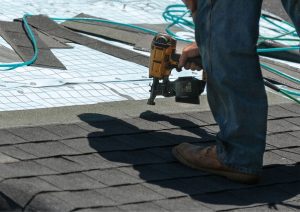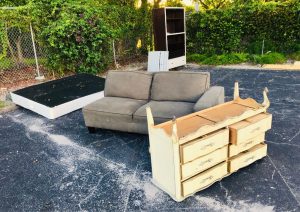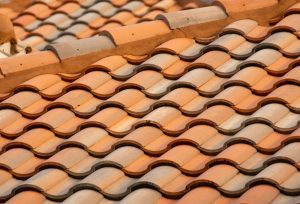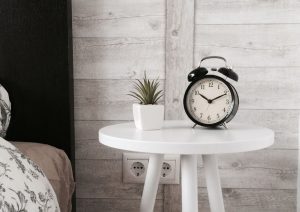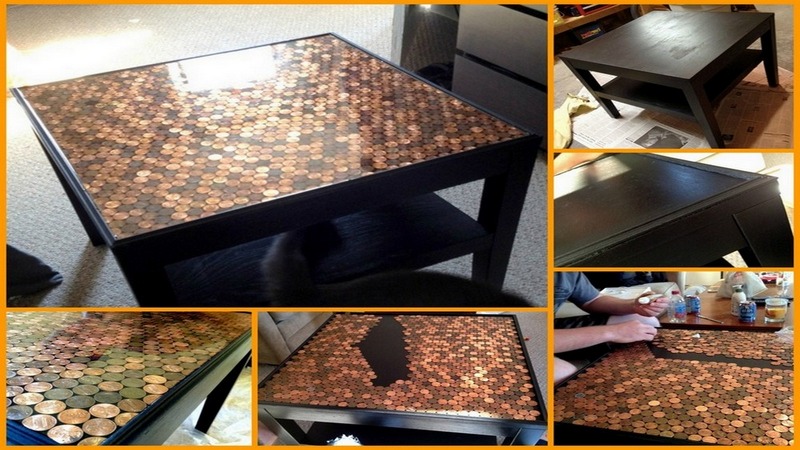
What’s the use of a penny in today’s economy? It seems like they’re always being phased out of circulation, and when you do find one, it’s not really worth that much. In fact, I’m not sure there’s anything under about 5 cents!
But there are actually some good reasons to hang onto your pennies. The U.S. government has been talking about doing away with the copper-plated coin for years.
They have made no progress so far. In fact, the US Mint spent 1.5 cents for each penny it produced in 2016, making the cost of every penny 50 percent higher than its actual value.
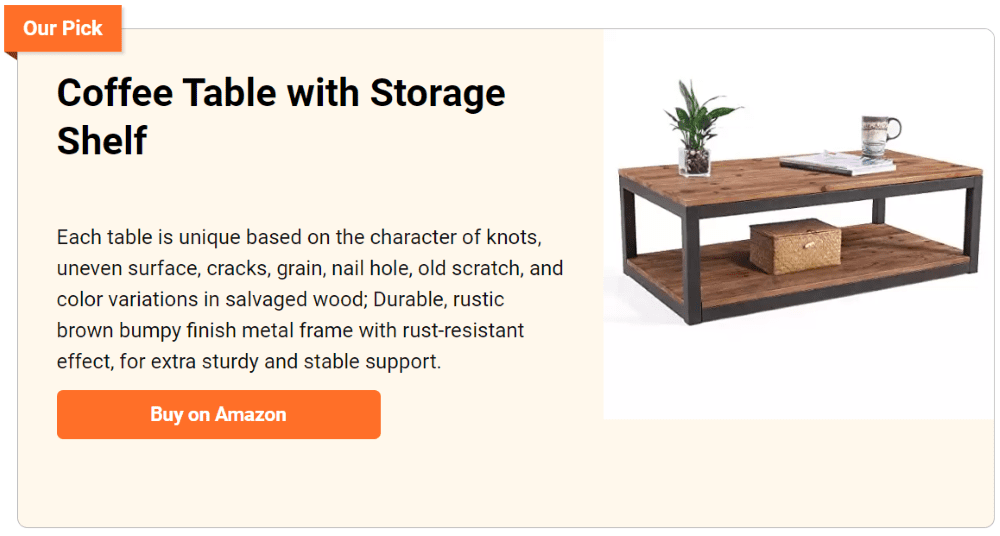
Do you have an old side table that has seen better days, but you don’t want to throw it away? Or if you don’t have any, simply buy an old, plain, or boring but decent table from a local thrift store.
Here’s a fun way to revive it! You literally only need a few pennies to create a new coffee table. Forget conventional finishes like paint or varnish for a while. 🙂
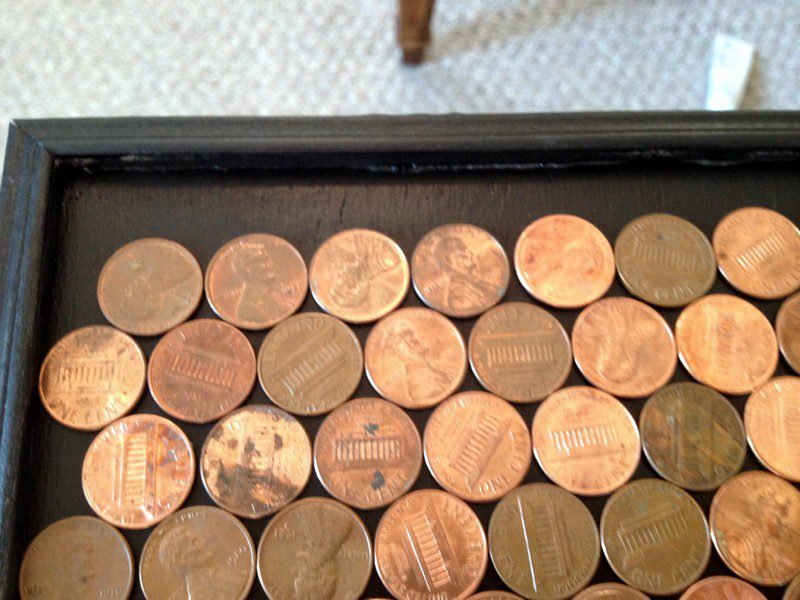
To revamp your old side table, start by sanding it down to bare wood. The table may be coated in old paint or varnish that is peeling or otherwise damaged. Sanding will remove this layer and provide a smooth surface for new paint or stain.
Additionally, sanding will help to even out the surface of the wood, making it easier to achieve a professional-looking finish.
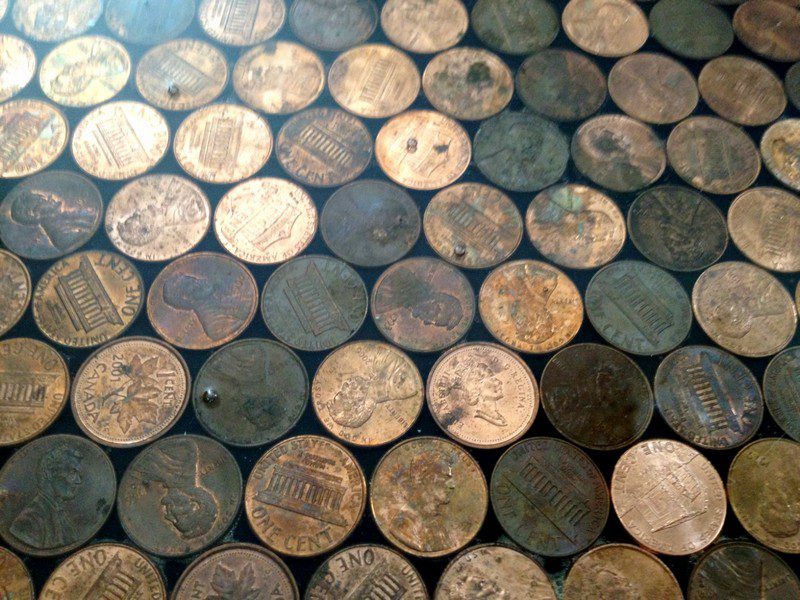
Once it’s sanded, apply a wood stain of your choice. Applying stain after sanding ensures that the stain will adhere properly and give the coffee table a new lease on life. Allow the stain to dry completely.
Once the stain is dry, apply a coat of sealer to protect the wood and give it a nice shine. The sealer acts as a protective layer, much like the varnish of a tabletop, against the unwanted effects of different liquids or lotions on the table.
As liquids and lotions seep into the wood of the table, the sealer acts as a barrier between the liquid and the tabletop.
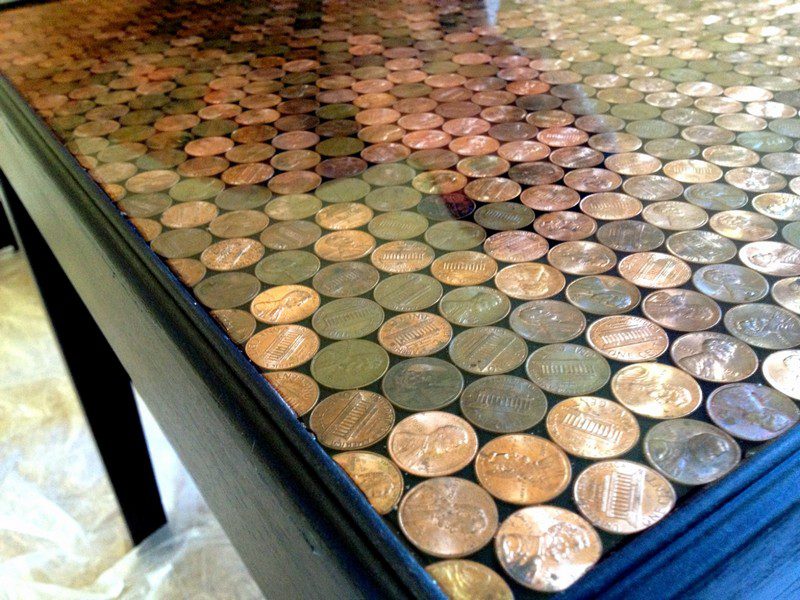
Finally, add a few pennies to the tabletop for a fun and unique coffee table. By doing this, you’ll add a bit of flair and personality to your coffee table, and it’ll be sure to stand out from the rest.
For an added touch of style, try using different colors and sizes of pennies. Plus, it’s a great way to use up those extra coins that you have lying around!
Then use all those coins to create your own penny coffee table!
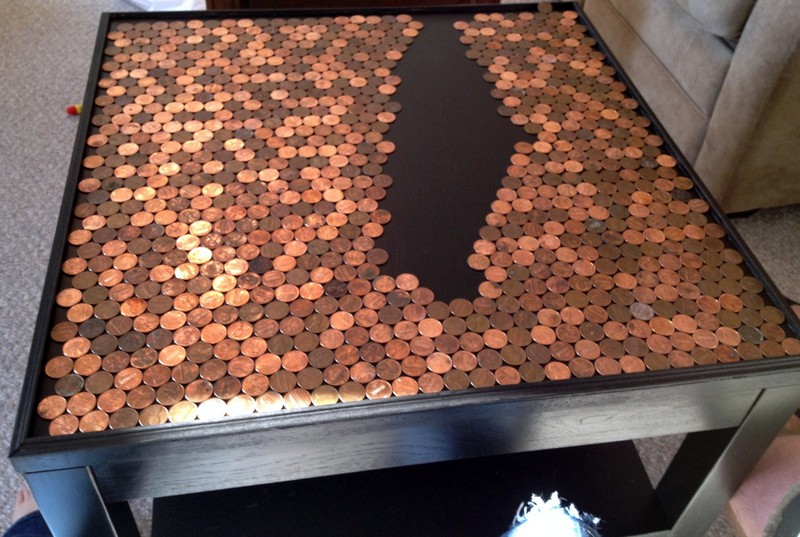
If you don’t like the idea of using coins, you can also use dominoes, bottle tops, toy building blocks, or anything else that takes your fancy. It’s a great project (with a bit of a challenge) that you can accomplish in a weekend, and it will give your old table a total makeover.
Making a Penny Coin Coffee Table
Why not give it a try on your old side table or coffee table?
Materials
- Wooden Table
- Pennies
- Sand Paper
- Newspaper
- Black Paint
- Thin Molding
- Wood Glue
- Tarnish Remover – for cleaning some of the pennies
- Super Glue
- Ultra Gloss Glaze
Tools
- Mitre Saw
- Paint Brush
- Clamps (you can use other things as substitutes for holding the molding in place until they dry)
- Foam Paint Brush
Instructions
Step 1: Prep Your Table
- Drag your table into a well-ventilated area. Spread out newspapers around to catch messes.
- Grab your sandpaper and sand every inch of the table. You’re aiming for super smooth, so don’t skimp on effort here.
Step 2: Time for Paint
- Clean off the dust with a slightly damp cloth. Let it dry.
- Take your black paint and a foam brush, then paint the table legs and sides. Wait for it to dry, then decide if it needs another go.
Step 3: Pennies Ready
- Clean your pennies with tarnish remover so they’re nice and shiny. Dry them off completely.
- Practice laying them out on the table top. Shuffle them around until you’re happy with the arrangement. No glue yet!
Step 4: Glue the Pennies Down
- Once you’re set on your design, start gluing. Take it slow, one penny at a time, with super glue. Make sure they’re snug together.
Step 5: Seal It Up
- After all the pennies are glued and the glue has dried, it’s time to seal them in. Brush on a layer of ultra gloss glaze. Let it set, then apply another layer for good measure.
Step 6: Adding the Edges
- Measure the edges of your table and cut the molding to fit with your mitre saw. Get those angles right!
- Paint your molding black to match and let it dry.
- Attach the molding around the edges of your table top with wood glue. Clamp them down to dry without any wiggles.
Step 7: The Finish Line
- Once everything’s dry, remove the clamps, clean up any spills or drips.
- Move your revamped coffee table to its new spot and enjoy your handiwork.
Click on any image to start the lightbox display. Use your Esc key to close the lightbox. You can also view the images as a slideshow if you prefer 😎
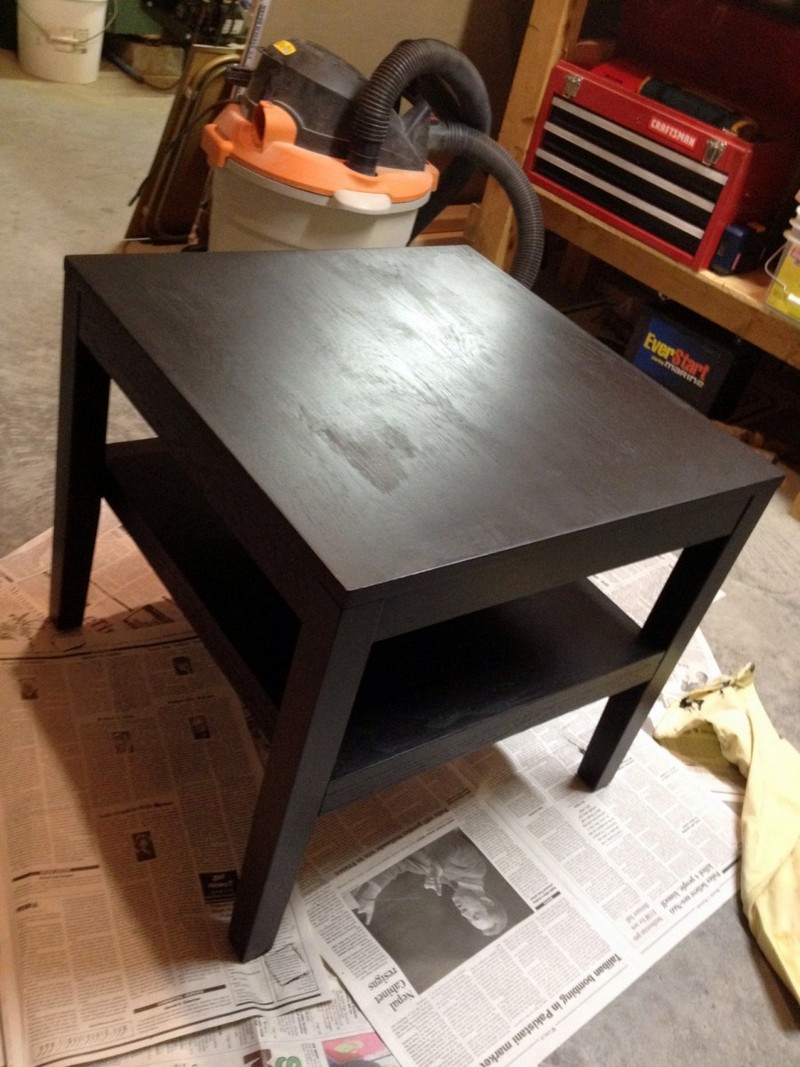
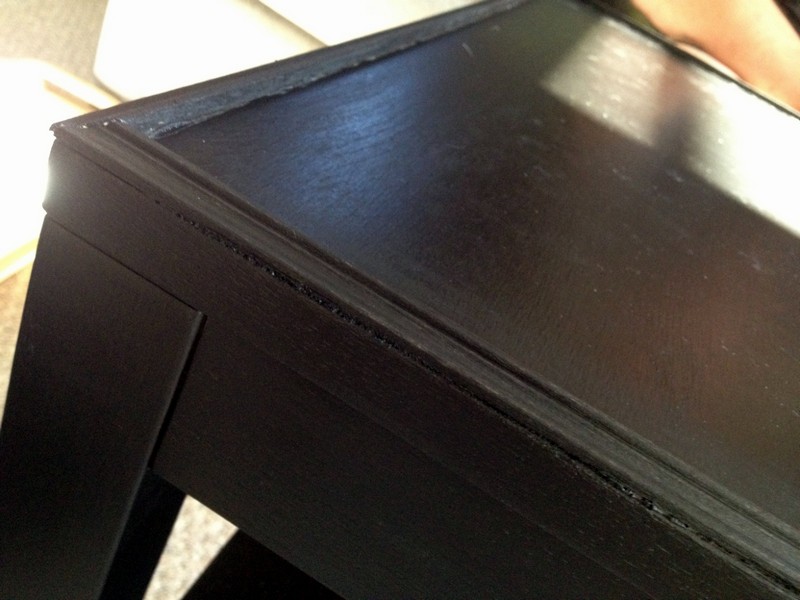

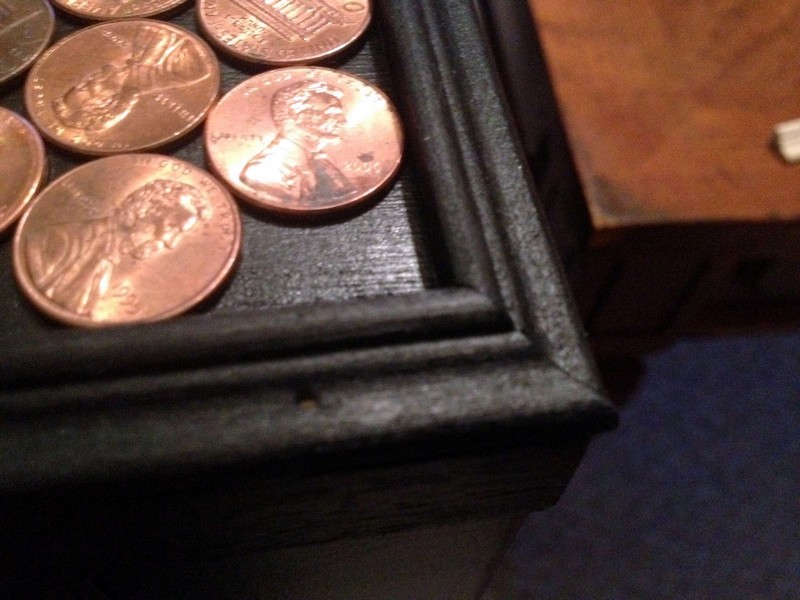


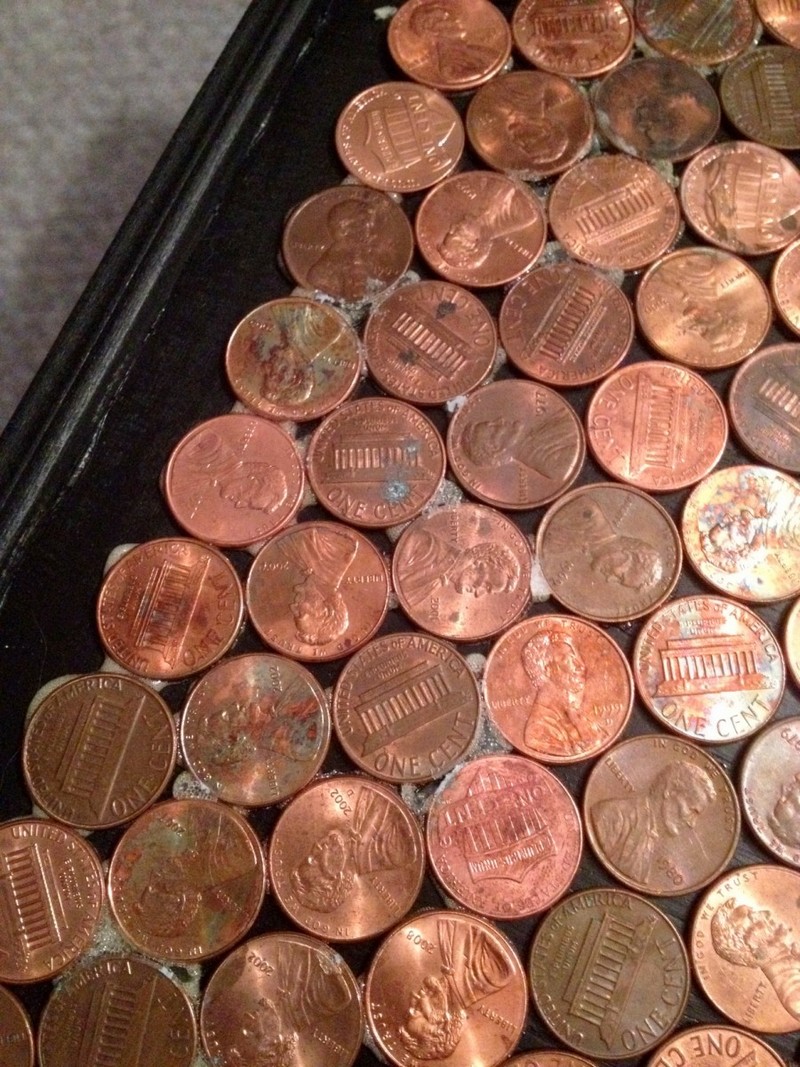

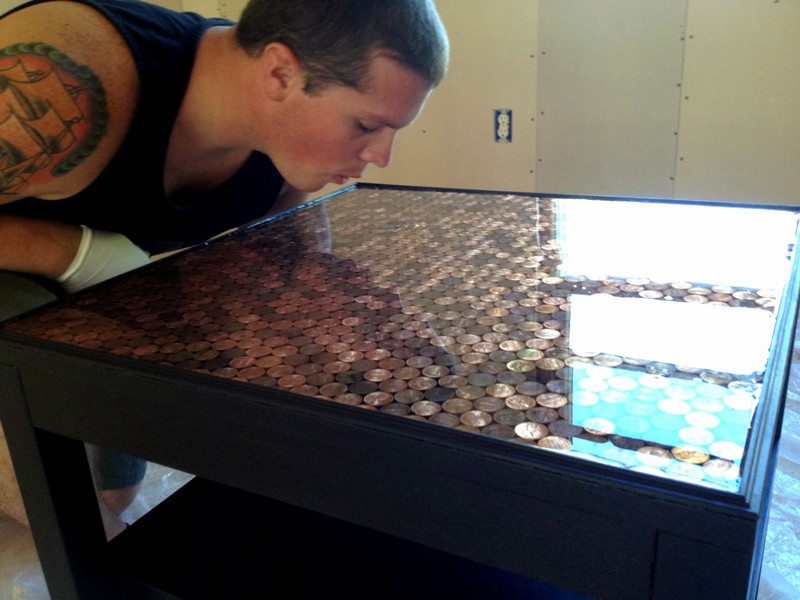

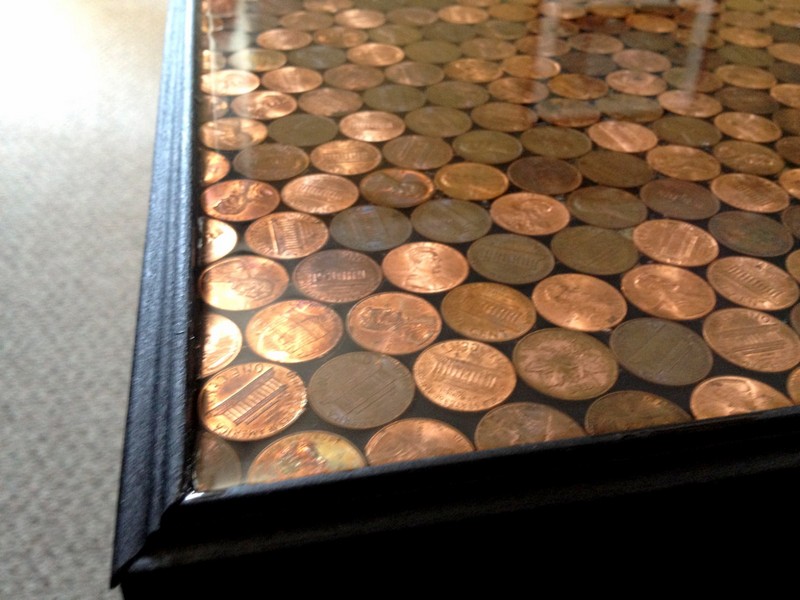
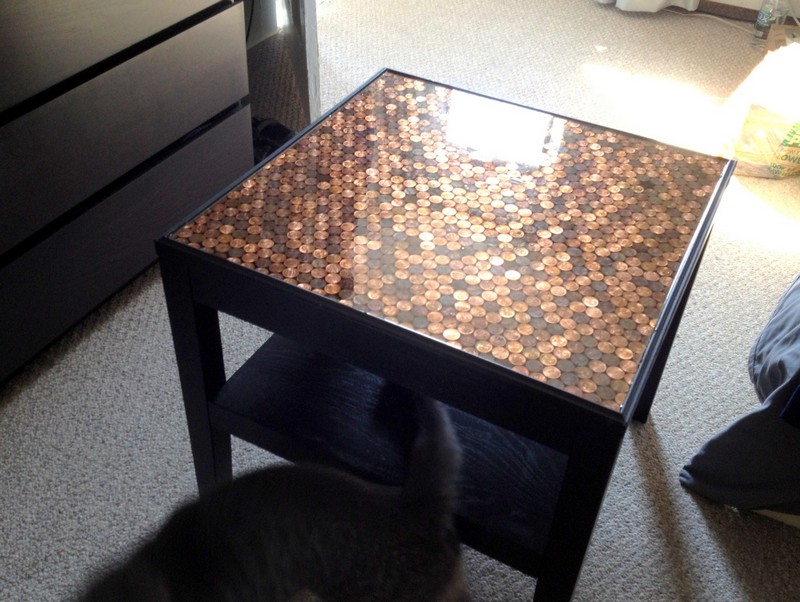
You can get more step by step instructions here…
Choosing the Right Base Material for Your Coffee Table
Choosing the right base material for your coffee table is crucial not only for its appearance but also for its durability and functionality. The material you select can significantly influence the overall style and feel of your room.
Here’s how to pick the perfect base for your coffee table that complements your living space and meets your needs.
Wood: Classic and Versatile
Overview
Wood is a popular choice for coffee tables due to its natural beauty and the warmth it adds to any space. It comes in various types, each with unique grain patterns and colors.
Pros
- Durability: Properly treated wood is durable and can last for decades.
- Aesthetics: Offers a range of finishes from rustic to modern.
- Workability: Easy to shape and customize with carvings or inlays.
Cons
- Maintenance: Requires regular polishing and can be susceptible to scratches and stains.
- Cost: High-quality wood can be expensive.
Metal: Sleek and Modern
Overview
Metal coffee tables provide a modern look and are often used in contemporary decor. They can be crafted from aluminum, steel, or iron.
Pros
- Strength: Extremely durable and supports heavy items without bending.
- Style Variety: Available in many finishes, including matte, polished, or painted.
- Low Maintenance: Easier to clean and doesn’t require much upkeep.
Cons
- Weight: Some metal tables can be quite heavy, making them difficult to move.
- Comfort: Metal can feel cold and hard, lacking the coziness of other materials.
Glass: Elegant and Light
Overview
Glass coffee tables are perfect for smaller spaces or rooms where you don’t want to obscure beautiful rugs or flooring. They lend a light, airy feel to the area.
Pros
- Visual Space: Keeps the room looking open and spacious.
- Modern Appeal: Offers a sleek, minimalist aesthetic.
- Ease of Cleaning: Simple to wipe down and doesn’t stain easily.
Cons
- Fragility: More prone to breaking if struck.
- Fingerprint and Smudge Prone: Requires frequent cleaning to keep clear of marks.
Composite Materials: Affordable and Creative
Overview
Composite materials, such as MDF (Medium Density Fiberboard), are an excellent alternative for those who want the look of real wood or stone without the high cost.
Pros
- Cost-Effective: Generally cheaper than natural materials.
- Variety of Finishes: Can mimic other materials like wood, marble, or even metal.
- Lightweight: Easier to move around if you like changing your room’s layout.
Cons
- Durability: Not as strong as natural materials, can be prone to damage from water and heat.
- Lifespan: May not last as long as other materials if not well-maintained.
Selecting the right material for your coffee table involves balancing aesthetics, functionality, cost, and maintenance. Whether you choose wood, metal, glass, or a composite, ensure it fits your lifestyle and complements your room’s decor.
Alternative Table Top Ideas
When crafting or revamping a coffee table, the tabletop material can dramatically transform its look and functionality. Beyond traditional wood or glass, there are several creative materials you can use to create a unique and personalized piece. Here are some alternative tabletop ideas to consider for your next DIY project.
Ceramic Tile: Durable and Decorative
Ceramic tiles offer a way to introduce color and pattern to your coffee table. They are commonly used in kitchens and bathrooms but can be just as effective in your living area.
Pros:
- Durability: Resistant to scratches and heat, ideal for a frequently used table.
- Variety: Available in numerous colors, patterns, and sizes.
- Easy to Clean: Spills can be wiped away quickly without staining.
Cons:
- Weight: Tiles and the required substrate can add significant weight to the table.
- Complex Installation: Requires more effort to install compared to simpler surfaces.
Reclaimed Wood: Eco-Friendly with Character
Reclaimed wood is not only environmentally friendly, but it also adds a rustic charm that is hard to replicate with new materials.
Pros:
- Unique Aesthetic: Each piece has its own history and distinctive marks.
- Strength: Often made from old-growth wood, making it more durable than new wood.
- Eco-Friendly: Reuses material that might otherwise be discarded.
Cons:
- Variability: It can be challenging to find consistent colors and textures.
- Maintenance: May require additional treatment to seal and protect the surface.
Epoxy Resin: Sleek and Customizable
Epoxy resin is a versatile material that can be used to encapsulate objects and colors, creating a completely custom tabletop.
Pros:
- Design Flexibility: Incorporate colors, patterns, or even objects like photos or fabric.
- Durability: Resistant to water and stains once cured.
- High Gloss Finish: Offers a sleek, modern look.
Cons:
- Cost: Can be expensive, especially for high-quality resin.
- Skill Level: Requires some practice to perfect the application technique.
Pebble and Concrete: Modern and Industrial
Combining pebbles with concrete can give your coffee table a unique, textured top that fits well in industrial or contemporary decor.
Pros:
- Texture and Interest: Adds a tactile element to your furniture.
- Customizable: Choose pebble colors and concrete dyes to match your decor.
- Durable: Highly durable and perfect for heavy-use areas.
Cons:
- Weight: Concrete is heavy, making the table difficult to move.
- Complexity: Requires a bit more skill to ensure a smooth finish.
Leather: Luxurious and Soft
Leather tabletops offer a surprisingly durable and luxurious option that ages beautifully over time, developing a unique patina.
Pros:
- Aesthetically Pleasing: Adds elegance and warmth to any room.
- Durable: Resistant to tearing and can last for years if maintained properly.
- Soft Touch: Provides a softer surface than hard materials.
Cons:
- Maintenance: Needs regular conditioning to prevent cracking.
- Price: High-quality leather can be quite expensive.
By exploring these alternative materials, you can create a coffee table that not only serves as a functional piece of furniture but also as a focal point of your room’s design. Whether you aim for rustic charm with reclaimed wood, modern flair with epoxy resin, or industrial ruggedness with pebble and concrete, the possibilities are endless.
Conclusion
Building a penny top coffee table is a creative way to add a unique touch to your home decor. This DIY project combines the elegance of hand-placed pennies with the satisfaction of creating something both beautiful and functional. With the right materials and a bit of patience, you can transform an ordinary table into a stunning centerpiece that captivates guests and sparks conversation.
If you liked this project, you will also like viewing these easy DIY projects…

